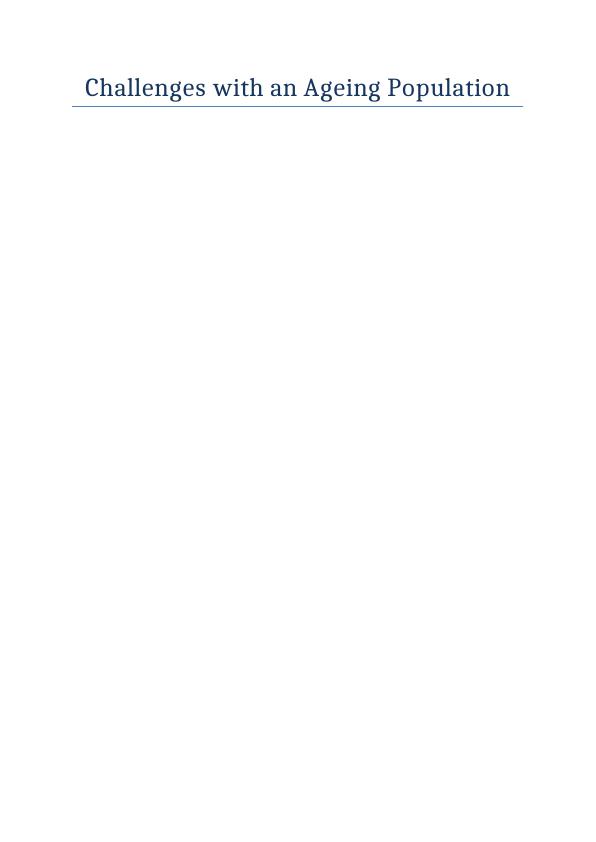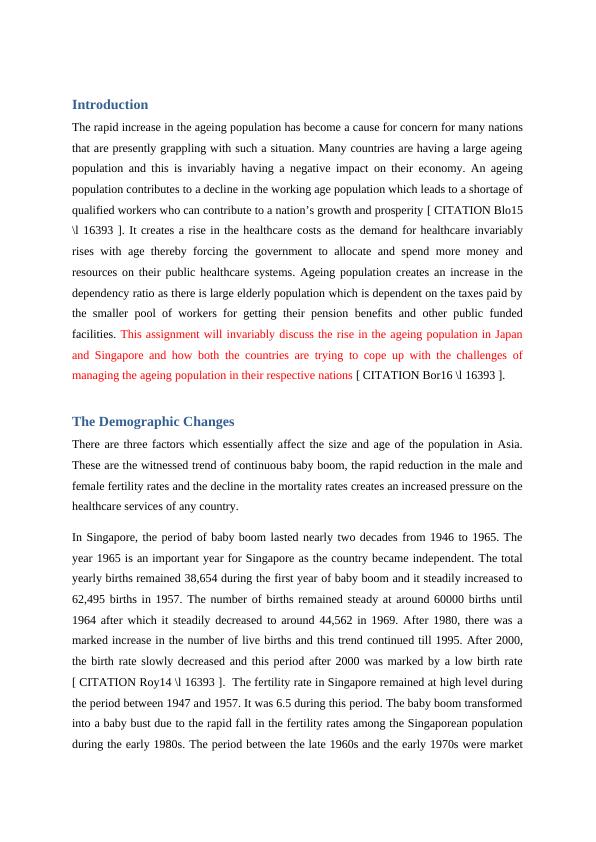Ask a question from expert
Challenges with an Ageing Population
10 Pages2828 Words180 Views
Added on 2020-04-01
Challenges with an Ageing Population
Added on 2020-04-01
BookmarkShareRelated Documents
Challenges with an Ageing Population

Table of ContentsIntroduction................................................................................................................................3The Demographic Changes........................................................................................................3The Policies................................................................................................................................4The Culture.................................................................................................................................6Conclusion..................................................................................................................................7Bibliography...............................................................................................................................9

IntroductionThe rapid increase in the ageing population has become a cause for concern for many nationsthat are presently grappling with such a situation. Many countries are having a large ageingpopulation and this is invariably having a negative impact on their economy. An ageingpopulation contributes to a decline in the working age population which leads to a shortage ofqualified workers who can contribute to a nation’s growth and prosperity [ CITATION Blo15\l 16393 ]. It creates a rise in the healthcare costs as the demand for healthcare invariablyrises with age thereby forcing the government to allocate and spend more money andresources on their public healthcare systems. Ageing population creates an increase in thedependency ratio as there is large elderly population which is dependent on the taxes paid bythe smaller pool of workers for getting their pension benefits and other public fundedfacilities. This assignment will invariably discuss the rise in the ageing population in Japanand Singapore and how both the countries are trying to cope up with the challenges ofmanaging the ageing population in their respective nations[ CITATION Bor16 \l 16393 ].The Demographic ChangesThere are three factors which essentially affect the size and age of the population in Asia.These are the witnessed trend of continuous baby boom, the rapid reduction in the male andfemale fertility rates and the decline in the mortality rates creates an increased pressure on thehealthcare services of any country. In Singapore, the period of baby boom lasted nearly two decades from 1946 to 1965. Theyear 1965 is an important year for Singapore as the country became independent. The totalyearly births remained 38,654 during the first year of baby boom and it steadily increased to62,495 births in 1957. The number of births remained steady at around 60000 births until1964 after which it steadily decreased to around 44,562 in 1969. After 1980, there was amarked increase in the number of live births and this trend continued till 1995. After 2000,the birth rate slowly decreased and this period after 2000 was marked by a low birth rate[ CITATION Roy14 \l 16393 ]. The fertility rate in Singapore remained at high level duringthe period between 1947 and 1957. It was 6.5 during this period. The baby boom transformedinto a baby bust due to the rapid fall in the fertility rates among the Singaporean populationduring the early 1980s. The period between the late 1960s and the early 1970s were market

End of preview
Want to access all the pages? Upload your documents or become a member.
Related Documents
Ageing Population in Singaporelg...
|8
|1505
|374
Healthcare Services Assignmentlg...
|10
|3139
|227
Introduction to Financial Planning: Demographic Factors, Investment Alternatives, and Retirement Income Adequacylg...
|10
|2135
|229